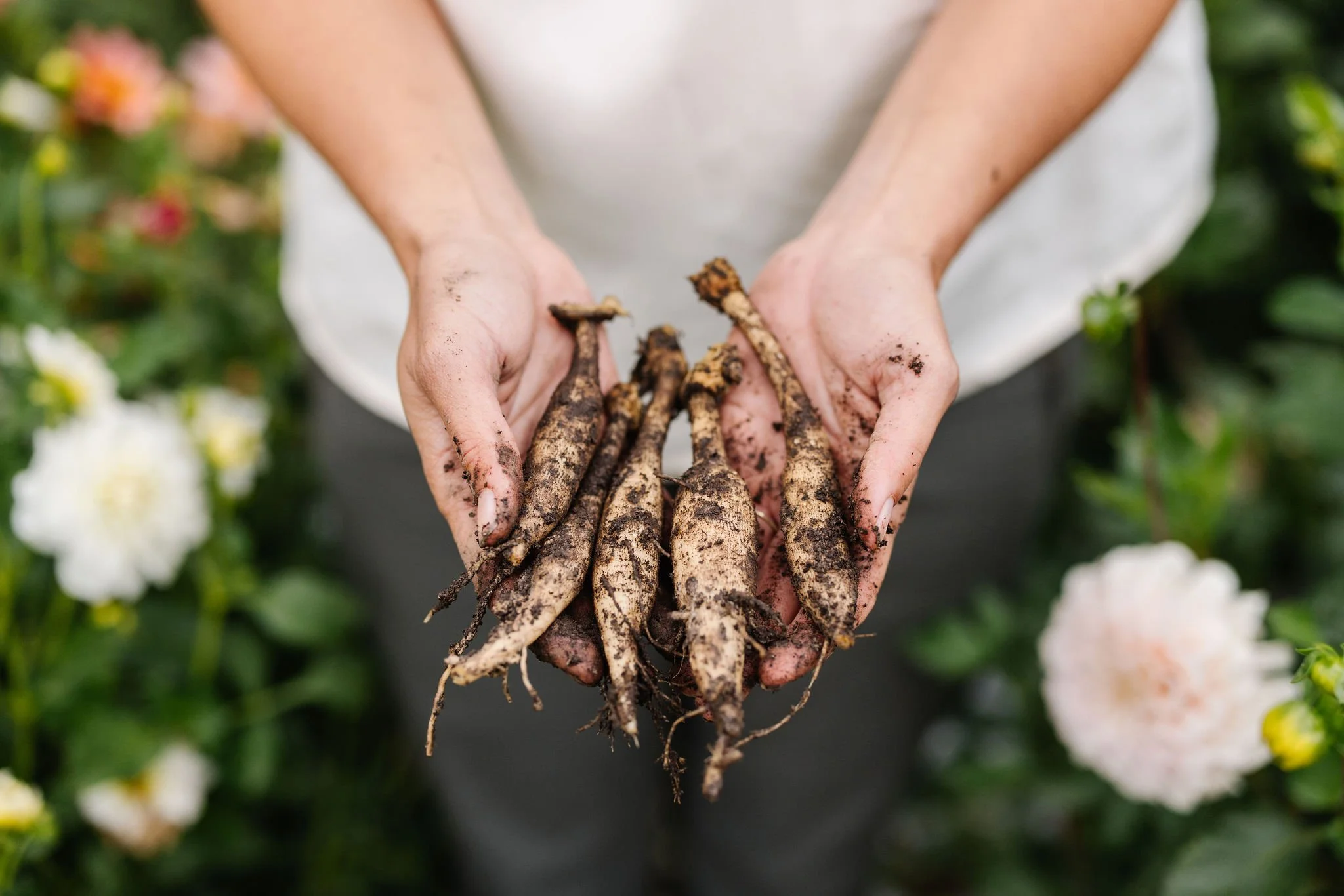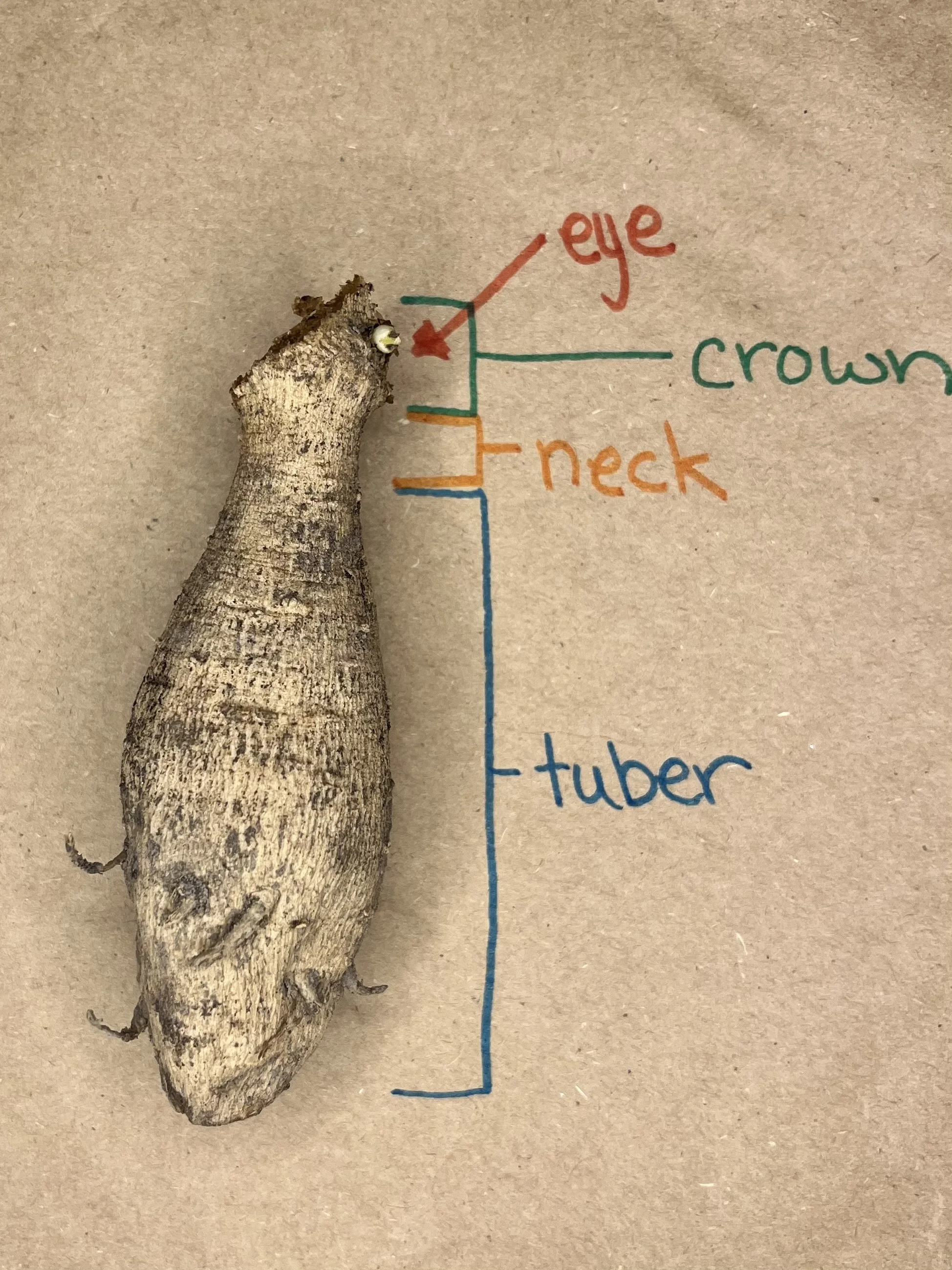Dahlias can seem a bit intimidating, right? Especially when you hear ‘tuber’ instead of ‘seed.’ Let’s break it down, starting with why they are so different from. Your familiar zinnia. A dahlia tuber is similar to a potato. If you grew up in Idaho like me, we know that in the fall, potatoes need to be harvested because they will freeze and die if left in the ground over winter (and because who doesn’t love French fries). In some places, tubers can be left in the ground no problem but, in my zone (7b) they need some protection but typically don’t leave them in ground. With all of this, it can feel overwhelming so I will share a few thoughts.
What is a dahlia tuber?
Above I mentioned that a tuber is like a potato and when you purchase a tuber from the dahlia tuber shop you are essentially getting a seed potato - a little potato with lots of eyes- you know that part where the plant starts growing when you leave it too long in a pantry. Unlike potatoes, a tuber from my dahlia tuber shop with likely only have one eye but from that single eye, a big beautiful plant will grow.
Recently people have been asking me if the plant will only get one bloom- like a sunflower. It is pretty much the opposite! A dahlia is actually a cut and come again plant. That means if you cut off the flowers it will grow a new one in its place. Dahlias plants have different shapes and sizes but they are all bushy and can use 18 to 24 inches of space between plants. (I plant mine closer together but that is a topic for another day).
This is a picture of the anatomy of a dahlia tuber.
The tuber part is full of genetic information and food to make a new plant - exactly like the one it came from. That is why when I post a picture of a flower I know it will look the same for you.
Why Tubers and Not Seeds, For Most Gardeners
Dahlias do produce seeds but their propagation usually only piques the interest of experimenters. Like many other seeds, dahlia seeds will produce plants but instead of an exact duplication of the genetic code, it is a combination of the varieties the pollinators have been to. As such, you will not know what the flower looks like until it blooms! Those who plant dahlia seeds feel like Christmas comes in August when the blooms start to appear. Some like the thrill of seeing what was created. Then there are breeders who plant thousands of seedlings to find one that have the qualities we all love about dahlias - uniform shape, appropriate size, productivity - bloom and flower. To date this has intrigued me but I have not tried it. However I own a lot of reading material on it! Check out the ‘Dahlia Breeding’ by Kristine Albrecht or Coseytown Dahlias IG. The chance a dahlia seed will produce a plant that has all the qualities needed to use on a cut flowers farm is low and it takes several years to test this. Since we are limited in our urban growing space, dahlias are not planted from seeds.
Pro-tip: Planting Dahlias in Utah
Despite the dahlia originating in the mountainous regions of Central America, a lot of the information about growing dahlias originates from humid, non mountainous regions. There are different challenges with growing in Utah but one thing we do not have a hard time with is having phosphorus in our soil. Last year my soil test showed a phosphorus level of 82.9 my/kg which is considered ‘very high.’ This is very common in Utah so we don’t need to add bone meal when planting tubers. I switch this out with a slow release nitrogen called nitroform from Greenway biotech (39-0-0).
Dahlias bring so much joy to any garden. I hope this helps you understand them a little better. What are you waiting for? Grab some dahlia tubers and get out there and experience the magic yourself.
Lindsey




